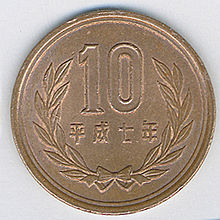Date and time notation in Japan
This article needs additional citations for verification. (October 2021) |
| Gregorian full date | 2024 |
|---|---|
| Gregorian all-numeric date | 2024/05/24 |
| Time | 08:48 |
Date and time notation in Japan has historically followed the Japanese calendar and the nengō system of counting years. At the beginning of the Meiji period, Japan switched to the Gregorian calendar on Wednesday, 1 January 1873, but for much domestic and regional government paperwork, the Japanese year is retained. Japanese people and businesses have also adopted various conventions in accordance with their use of kanji, the widespread use of passenger trains, and other aspects of daily life.
Date[edit]

The most commonly used date format in Japan is "year month day (weekday)", with the Japanese characters meaning "year", "month" and "day" inserted after the numerals. Example: 2023
Either form may be abbreviated as yy/mm/dd; periods as separators are not uncommon either. Examples: 5/12/31, 23/12/31, 23.12.31. Ambiguities as to which calendar is used for the year are usually only resolved by the context in which the date appears, but imperial calendar dates may be prefixed with a single character or letter denoting the era, e.g.
Time[edit]

Both the 12-hour and 24-hour notations are commonly used in Japan. The 24-hour notation is commonly used in Japan, especially in train schedules.[1] The 12-hour notation is also commonly used, by adding
Using the Japanese notation, times are written as "8
Times past midnight can also be counted past the 24 hour mark, usually when the associated activity spans across midnight. For example, bars or clubs may advertise as being open until "30
References[edit]
- ^ a b c "DateTime::Locale::ja_JP - Locale data examples for the Japanese Japan (ja-JP) locale - metacpan.org". metacpan.org. Retrieved 2021-06-07.
- ^ a b "Convert Western years to Japanese years".
- ^
山下 ,洋子 (July 2015). 12時 間 制 と24時 間 制 (PDF).放送 研究 と調査 . NHK Publishing. p. 31. Retrieved 2023-08-07.
